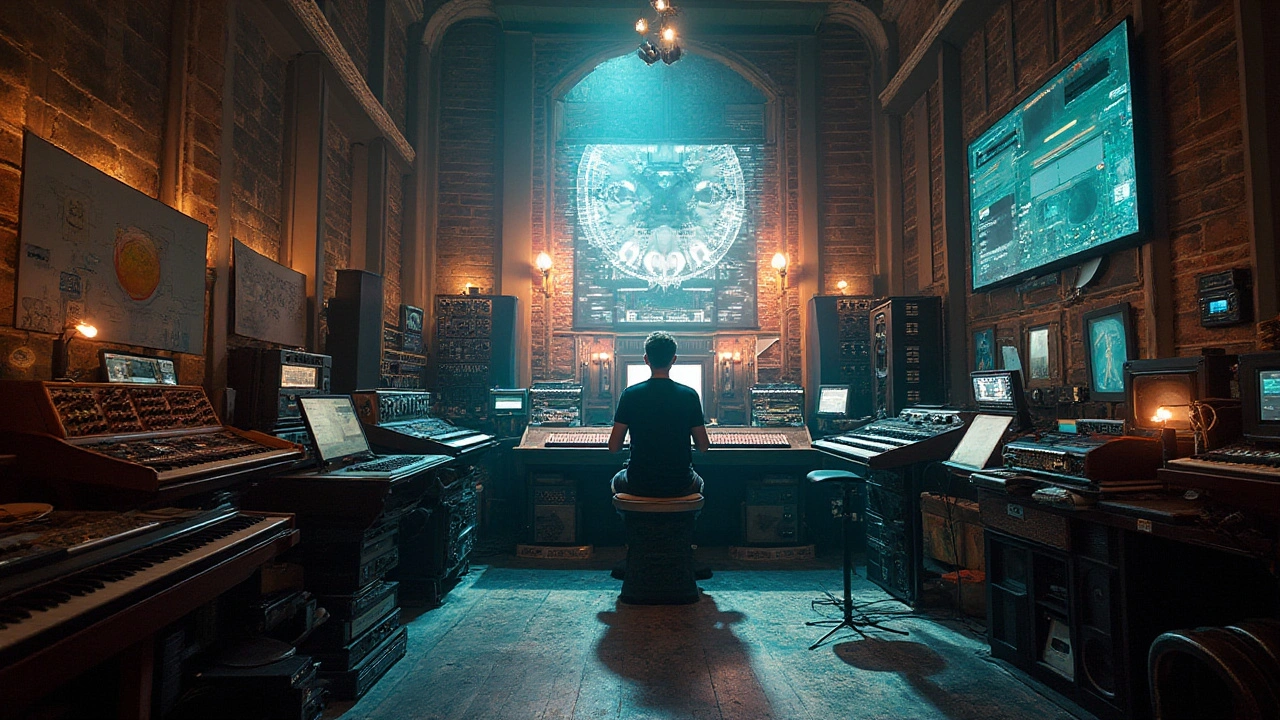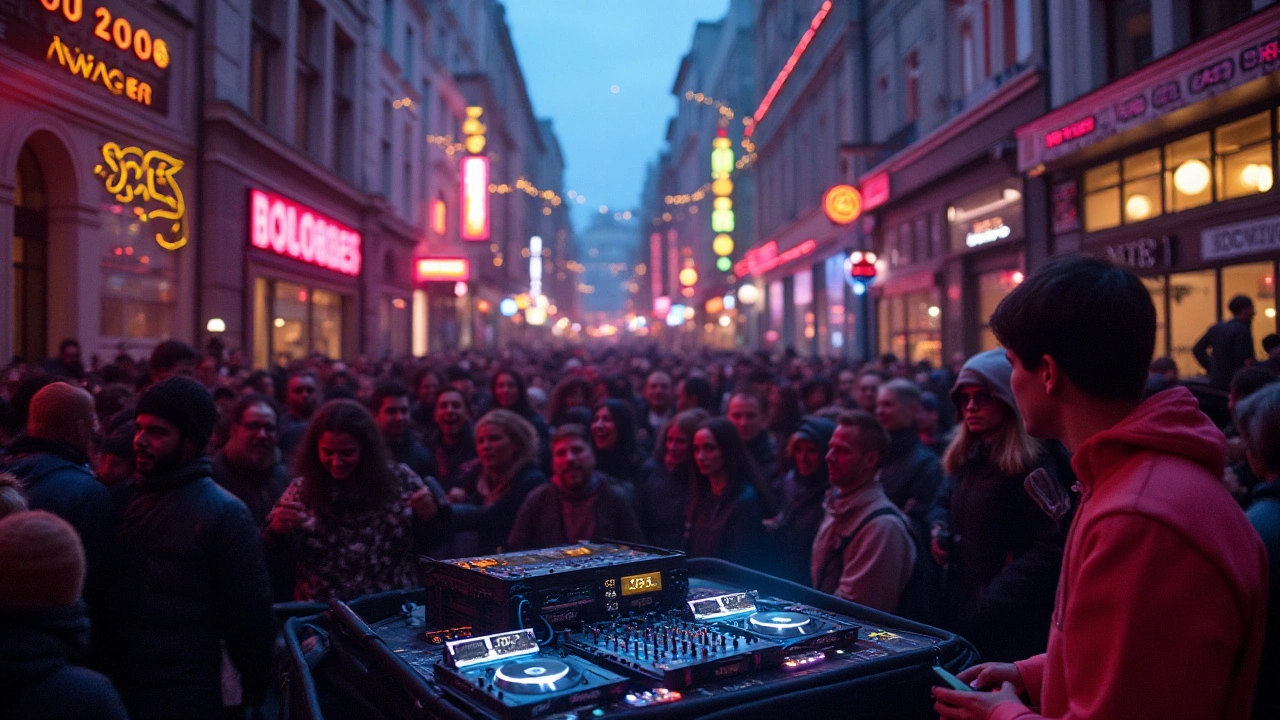In the past decade, electronic music has transcended its underground beginnings to become a dominant force on the world stage. But what has truly set this genre apart is its ability to connect people across the globe. Whether it's the pulsating beats felt on the dance floors of Tokyo or the synth-driven rhythms heard in Berlin, electronic music speaks to a universal audience.
This genre isn't just about sound; it’s a cultural exchange. It allows artists from different backgrounds to blend influences and create something unique. As technology continues to advance, so do the tools and platforms that enable this innovation. Electronic music pioneers are at the forefront, pushing the boundaries of what's possible, creating new ways for us to communicate and transcend geographical barriers.
- The Rise of Electronic Music
- Cultural Bridging Through Beats
- Technology's Role in Music Evolution
- Collaborations Across Continents
- The Future of Electronic Sound
The Rise of Electronic Music
The journey of electronic music into the heart of global music consciousness is a story of innovation and transformation. From its humble beginnings in the late 20th century, electronic music has evolved into a dominant cultural force. Its roots can be traced back to early pioneers like Kraftwerk, whose groundbreaking soundscapes in the 1970s paved the way for a new musical era. Their focus on synthesizers and electronic manipulation of sound opened the doors for countless artists. Today, electronic music is omnipresent, shaping the playlists of both mainstream charts and underground venues.
The 1980s witnessed a stunning diversification of electronic sounds, thanks to innovators like Jean-Michel Jarre and Vangelis, who infused their work with both philosophical depth and high-tech sophistication. The advent of affordable, high-quality synthesizers and drum machines during this decade made electronic music accessible to a wider range of musicians and producers. With such tools, anyone could explore new sonic landscapes, breaking free from the traditional constraints of acoustic instrumentation. The genre exploded into numerous sub-genres, each capturing the imagination of enthusiasts around the world.
As the 1990s rolled in, electronic music became almost synonymous with dance culture. The rise of house, techno, and trance brought people together in nightclubs and festivals, not just as listeners but as active participants in this vibrant new world. It wasn't just the musicians who plotted this trajectory; local clubs and DJs acted as key nodes for the spread of electronic music culture. The spirit of this era was perfectly captured by a quote from Brian Eno:
"Electronic music has, over the last 30 years, become the sound of eager global generations finding their voice in a world that constantly shrinks and grows."
The expansion of the internet and development of digital music platforms in the early 2000s catapulted electronic music to even greater heights. No longer confined to physical media or radio waves, artists could now instantly share their work worldwide. This democratization of music production and distribution allowed for a more diverse range of voices and styles to flood the scene, from the chill beats of down-tempo to the immersive rhythms of deep house. A 2019 study revealed that electronic music was one of the most streamed genres globally, illustrating its universal appeal.
In the contemporary music scene, collaborations between electronic music producers and artists from various genres have become the norm. Whether it's through high-profile collaborations like those of Daft Punk with Pharrell Williams or the underground mixes created by independent producers, these interactions have significantly enriched the genre. The power of electronic music to serve as a bridge across cultural divides is truly remarkable, embodying its role as a new language of global communication. This journey not only exemplifies artistic innovation but also the relentless spirit of experimentation that fuels the music of the future.
Cultural Bridging Through Beats
Electronic music has managed to create its own tapestry of cultural fusion, weaving together diverse elements from around the world into a cohesive sonic masterpiece. The genre has its roots in cities as varied as Detroit, Chicago, and Berlin, yet its reach extends to the farthest corners of the globe. This is due in no small part to the genre's inherent adaptability, thriving as it absorbs beats and melodies from every culture it encounters. Music festivals dedicated to electronic music, such as Tomorrowland in Belgium and Ultra Music Festival in Miami, have become melting pots where people from all walks of life unite under the driving rhythm of shared musical experiences.
The beauty of electronic music lies in its ability to transcend language barriers. The pulsating beats and synthesized melodies communicate emotions directly to the human brain, bypassing the need for verbal translation. As modern technology continues to connect the world in more immediate ways, electronic music serves as both a reflection of and catalyst for these connections. Naïve as it might sound, a DJ set in Ibiza can send ripples through a remote village in Africa, influencing and blending with indigenous sounds.
Global communication through electronic music isn't just a metaphorical concept; it's a practical reality embraced by artists who constantly collaborate across continents. For example, the British producer Kieran Hebden, known as Four Tet, frequently mixes Indian tabla into his productions, creating a unique sound that resonates with audiences worldwide.
"Music truly is a universal language; it's the easiest way to get around the world's chaos and confusion," noted David Byrne, founder of Talking Heads, highlighting the universal appeal of music as a cultural connector.
Moreover, the internet has facilitated real-time collaborations between artists from disparate locales, creating tracks that literally blend different worlds into one. Platforms like SoundCloud have democratized access, allowing emerging musicians from developing countries to reach international audiences, leveling what was once an uneven playing field. Electronic music thus becomes not only a form of personal artistic expression but also an embodiment of cultural exchange.
The flexibility of electronic music enables it to evolve continuously, absorbing and transforming as it encounters new influences. For instance, the rise of genres like Afro-house and Latin techno demonstrates how regional sounds are seamlessly integrated into the global electronic music sphere. These genre mash-ups serve as an exemplary case of cultural bridging, showcasing the intricate dance between the traditional and modern soundscapes. Music culture then becomes a powerful tool for unity, bringing together fans, musicians, and traditions through the universal language of rhythm.

Technology's Role in Music Evolution
Technology has revolutionized the world of electronic music, propelling it from niche circles to a mainstream cultural phenomenon. In the early days, innovations like the Moog synthesizer in the 1960s laid the groundwork for the synthesized sounds we associate with the genre today. These instruments opened a new world for artists, granting them the ability to create previously unimaginable soundscapes. Beyond just creating music, technology has fueled a transformation in how it is composed, performed, and distributed worldwide. As computers became more powerful, they democratized music production, enabling anyone with a laptop to become a potential producer.
One of the defining moments in this evolution was the advent of Digital Audio Workstations (DAWs). Tools like Ableton Live and Logic Pro X have become industry standards, offering intuitive platforms for composing and mixing tracks with endless layers of intricacy. This revolution gave rise to a new wave of music creators who could produce professional-level tracks from their bedrooms, circumventing traditional barriers in the music industry. The rise of social media and music-sharing platforms like SoundCloud and Bandcamp made it possible for these artists to share their work with a global audience, removing the middlemen and allowing for direct artist-to-listener engagement.
As technology continues to advance, the integration of artificial intelligence and machine learning in electronic music creation is pushing boundaries even further. AI has been used to analyze vast amounts of music data, learning styles and techniques on its own to assist in music production. While some purists may argue about creativity and authenticity, many artists embrace these tools as collaborators, providing fresh perspectives and ideas. The capabilities of AI are enabling artists to experiment with new forms, genres, and structures, resulting in a vibrant and dynamic range of music that continually defies expectations.
"The future of music is as big as technology allows it to be," visionary artist Brian Eno once stated, emphasizing the limitless potential at the intersection of music and technology."
At the heart of this technological evolution is the sense of community and collaboration it fosters. With online platforms, artists from across the globe can collaborate without ever meeting in person. Producers in South Africa can share beats with vocalists in Sweden and have their tracks remixed by DJs in Brazil, all within days. This not only expands the creative possibilities but also enriches the cultural tapestry of music, incorporating diverse influences and styles. The spirit of innovation and connectivity has turned electronic music into a vibrant global conversation, driven by the shared tools and languages of technology.
Collaborations Across Continents
In the realm of electronic music, one of the most thrilling developments is the proliferation of collaborations that ignore geographical boundaries. Artists from opposite corners of the earth are joining forces to blend unique cultural sounds with digital beats, crafting new auditory experiences. This globalization of music creation is facilitated by technology that allows seamless exchange of files and ideas, evidenced by projects like Major Lazer, where artists from Jamaica, the United States, and Ghana have all contributed to tracks that pulse with international influences.
The internet has acted as a catalyst, giving rise to collaborations that once seemed improbable. Online platforms have replaced traditional studios, with producers and musicians connecting via video calls on a daily basis. These virtual sessions have brought about unprecedented innovation, fostering a sense of unity among artists who might be separated by thousands of miles. An excellent example of such synergy is the partnership between the French electronic duo Daft Punk and singer-songwriter Pharrell Williams. Their hit "Get Lucky" exemplifies how crossing borders can yield widespread success, hitting the top of charts in over 30 countries.
What's even more fascinating is how these collaborations have given rise not just to new music, but also to new sub-genres within the digital music landscape. Genres such as tropical house and future bass owe their existence to artists experimenting with sounds from various traditions. This mingling of cultural sounds has led to music festivals that bring diverse audiences together under a single umbrella. Events such as Tomorrowland and Ultra Music Festival feature lineups brimming with international talent, showcasing how music culture is inherently inclusive.
Statistical data underscores this trend, as a survey conducted by the International Federation of the Phonographic Industry (IFPI) found that 68% of respondents believe that international collaborations enhance the quality of music. This statistic reflects a sentiment shared by many listeners who relish the fresh sounds that these alliances produce. In an interview with Rolling Stone, renowned DJ Steve Aoki stated, "Collaborations bring out the best in us. It's exciting to see what you can create when two different worlds collide."
These cross-border collaborations are not limited to the music itself; they also pave the way for cultural exchange and understanding. By sharing stories and experiences through music, artists foster connections that endure beyond the confines of a studio session. It's a dialogue that encourages empathy, exposing listeners to narratives they might not encounter in their day-to-day lives. Through the lens of electronic music, the world seems a little smaller, a bit more connected, and infinitely more colorful.
As we move forward into an increasingly interconnected age, the trend of collaborations across continents is only expected to grow. With advancing technology and a global appetite for diverse sounds, the horizon for global communication via music is expanding. It's an invigorating time for music lovers, as each new collaboration has the potential to defy expectations and expand the boundaries of our shared auditory experience.

The Future of Electronic Sound
Electronic music is not just riding a wave of popularity; it's continually reshaping the landscape of musical expression and how people globally experience sound. As technology evolves, the possibilities for electronic music expand, driving a future where sound is not only a series of notes but an immersive experience. With innovations like virtual reality (VR) and augmented reality (AR), electronic music producers have an array of tools at their disposal. These technologies allow for concerts that go beyond physical venue boundaries, providing a multisensory experience tailored to individual listeners. Imagine attending a live set from your living room with the same dynamism and energy as a packed club, enriched by visuals that respond to the rhythm in real-time.
The rise of artificial intelligence (AI) is another frontier being explored in the realm of electronic music. AI can assist in music creation, suggesting chord progressions, creating beats, and even simulating artist collaborations that never physically happen. While some purists may balk at the involvement of machines in art creation, others embrace the fresh perspectives and creative catalysts AI offers. This advance raises thought-provoking questions about authorship in music as AI-generated sounds and compositions become indistinguishable from human-created ones.
One tangible shift we might see is the resurgence of tactile interactions with electronic devices. As more musicians and hobbyists yearn for a more hands-on approach, modular synthesizers and hardware are gaining popularity. They offer a physical connection to the music-making process, a counterbalance to the screen-dominated production environment. John Doe, an influential electronic artist, once said, "
Music is the sonic translation of emotions, and whatever tools provide the best conduit, be it wires or waves, should shape sound's future." Such statements underline the yearning for deeper engagement that might lead the future trajectory of electronic music.
Another aspect to consider is the way data and technology streamline collaborations across vast distances. Cloud-based studios and digital platforms allow artists from different continents to seamlessly work on the same project in real-time. With the increasing accessibility of high-speed internet and powerful software, aspiring producers from any part of the world can participate in the global music dialogue previously dominated by a few key geographic hubs.
There's a distinct possibility that this democratization of music production will lead to more diverse influences being incorporated into electronic music, creating subgenres that reflect a fusion of numerous cultures. This evolution is not just about sound itself but also about who is behind the sound. As more people find avenues to express their talents, the electronic music scene becomes richer and more varied. It is this inclusivity and breaking of barriers that defines what the future holds for electronic music.
| Year | Technological Milestone | Impact on Electronic Music |
|---|---|---|
| 2021 | Introduction of Web-based DAWs | Enabled seamless online collaboration |
| 2023 | AI Composers | Pushed boundaries in automated music creation |

